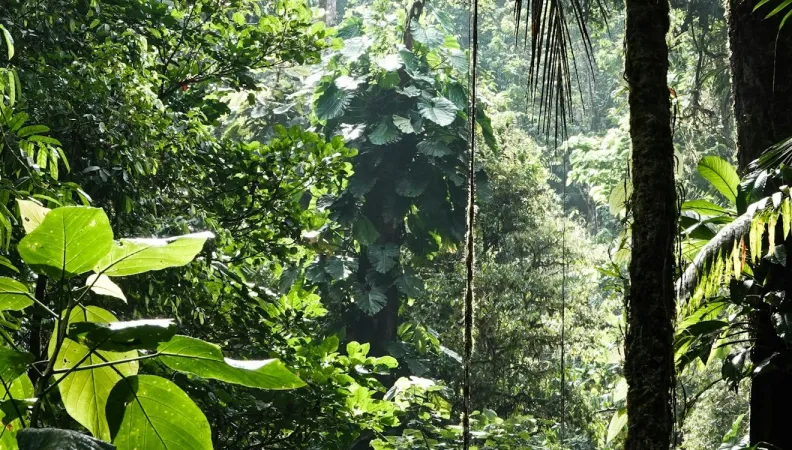Share the page
Defying Desertification: Feeding Populations without Plundering the Planet
Published on

In the quest to feed a rapidly global population, certain modes of farming and food production are damaging the environment and stripping the earth of valuable nutrients and minerals. For the opening of COP16 Desertification in Riyadh, Saudi Arabia, we look at the worldwide search for sustainable ways to produce food while protecting the planet.
Article originally published on 14/06/2024 and updated on 02/12/2024
No country spared
Climate change and galloping global inflation have reversed decades of gains in food security. According to the Food and Agriculture Organization, global hunger affects more than 9% of the world population – over 700 million people – an increase of at least 100 million people since the Covid 19 Pandemic struck in 2019.
Since then, the prices of major food staples have skyrocketed. The price of maize has soared by 19 percent, wheat by 24 percent, and rice costs 46 percent more than it did just a few years ago.
“No country is spared from malnutrition, although it is expressed a different way from one country to another, it affects us all,” Brieuc Pont told a Paris Peace Forum podcast. He is Secretary General of the Nutrition for Growth Summit, a global effort to bring together governments, donors, businesses and NGOs to accelerate progress in reducing malnutrition.
Further reading: Enriching soil fertility for food security
The search for solutions is also at the center of a new book by author Erik Orsenna and former Agriculture Minister Julien Denormandie. In “Feed without Devastating” (Nourrir sans dévaster), they speak to farmers, experts and historians in Brazil, Ukraine and Egypt on how food is being produced, from a worrying over-reliance on pesticides to a return to natural methods to produce food sustainably.
Their journey begins in France, an agricultural powerhouse, where nevertheless some 16% of the population do not have enough to eat (link in French).
Not always a question of having enough food
Here as elsewhere, inflation is among the chief reasons for the recent spike in malnutrition, exacerbated by a rise in the consumption of highly processed foods, a trend that is spreading to countries across the Global South, such as Brazil.
While undernutrition levels have fallen over the past few decades, obesity rates in Brazil have climbed from 3% in the 1970s to 22% for men in 2019 and to 30% for women.
Malnutrition can result not only from a lack of food, but also from the lack of nutrients in food of lower quality. “Some developing countries are shifting from traditional diets high in cereal and fiber to more Western pattern diets, high in sugars and fats,” says Brieuc Pont. “And this transition often comes with more cases of non-communicable diseases, like diabetes and obesity.”
Further reading: AFD Intervenes to tackle the food crisis
Soil as a generator of biodiversity
Communities across the Amazon for example, have seen their lifestyles upended by decades of deforestation. An estimated 45% of residents in the north of the country suffer some degree of food insecurity.
In Brazil’s nearby state of Cerrado, Orsenna and Denormandie meet a farmer called Neto, who grows corn, wheat and soy. With fertilizers becoming more and more expensive, he has instead managed to coax more crops out of the red, ferric earth by introducing bacteria, which can benefit plant and crop nutrition by generating micronutrients like iron.
British journalist George Monbiot set out on a trek of his own to find innovative ways to produce healthy food. In the middle of his 2022 book, “Regenesis, Feeding the World without Devouring the Planet”, he discovers in Southern England what could be described as a modern-day miracle: more than 100 different varieties of vegetables growing on land not even classed as arable.
Monbiot meets Iain Tolhurst on his farm between Oxford and Reading, which has produced results so astonishing that it has been the subject of scientific study. The fields are lined by trees, with vast flowerbeds separating the plots, containing some 75 species of wild flower.
Getting more out of soil while adding less
Crop yields have continued to rise without the use of pesticides, fertilizers, or any artificial inputs. Instead, Tolhurst uses multiple crop rotation and “green manure”: plants and flowers whose roots hold water underground off-season. When they finally decompose, they enrich the soil naturally, for the crops to flourish the following season. “The idea is to let the plants put back at least as much carbon and minerals as we take out,” Tolhurst tells Monbiot.
The vast variety of crops, plants and flowers in turn attracts a wide range of insects and wildlife, including animals which, in a virtuous cycle, attack and control pests. “Biodiversity is the driver of the farm,” adds Tolhurst. “If I’m asked ‘What do you grow?” I say ‘biodiversity’. The vegetables are a by-product.”
Nature-based methods like these will have to be multiplied and scaled up if the world is to have any chance at feeding a global population expected to reach some 10 billion by the end of the century.
The stakes are high: the International Panel on Climate Change warns that desertification, soil loss and land degradation could render up to 10% of currently arable land unfit for food production.
Further reading: Working towards food security in West Africa
The Economist’s 11th Global Food Security Index show a widening gap between countries like Finland and Ireland on the one hand and much of sub-Saharan Africa, which scored poorly due mainly to limitations in the quantity, affordability, quality and safety of food available.
Countries that perform well tend to invest in research and development and have a strong supply chain infrastructure. Researchers also found that empowering female farmers contributed to a jump of more than 18% in global food security scores.
